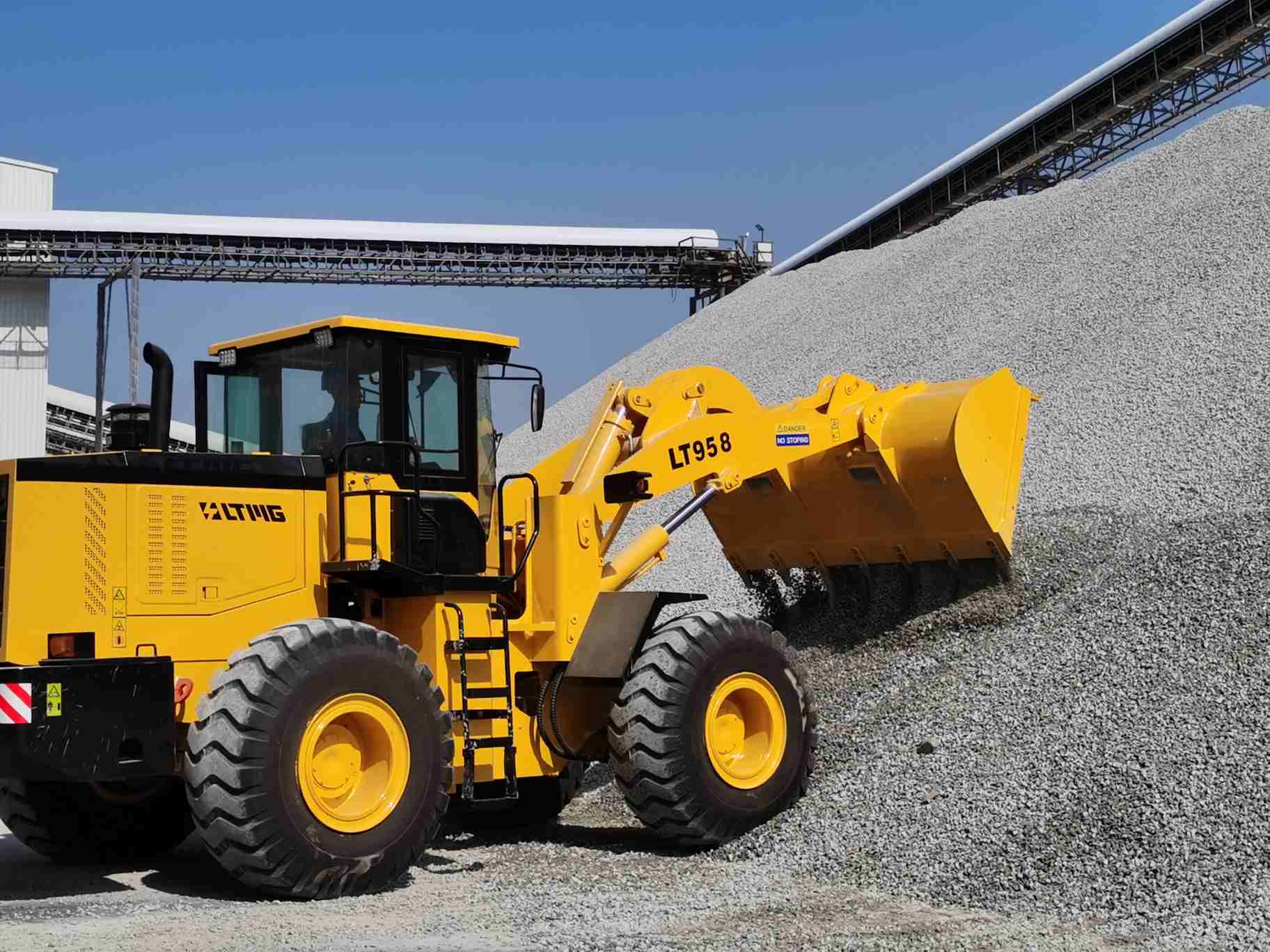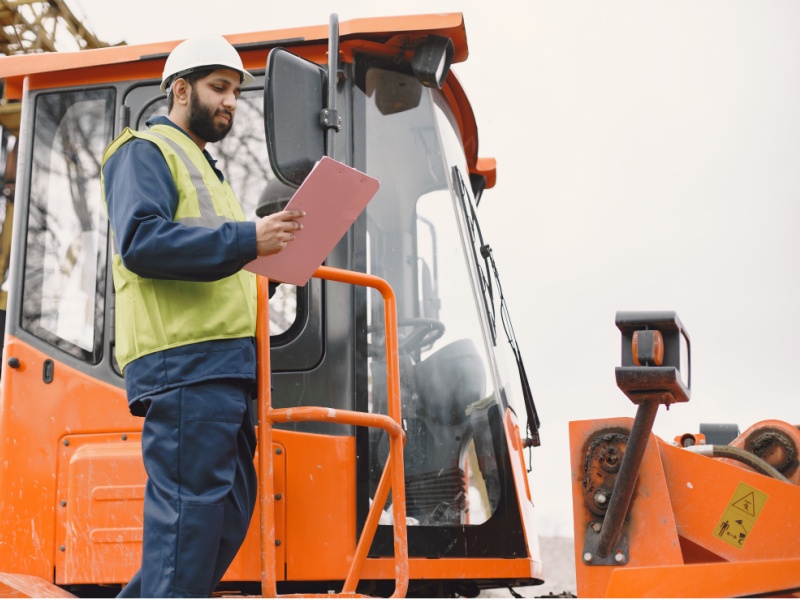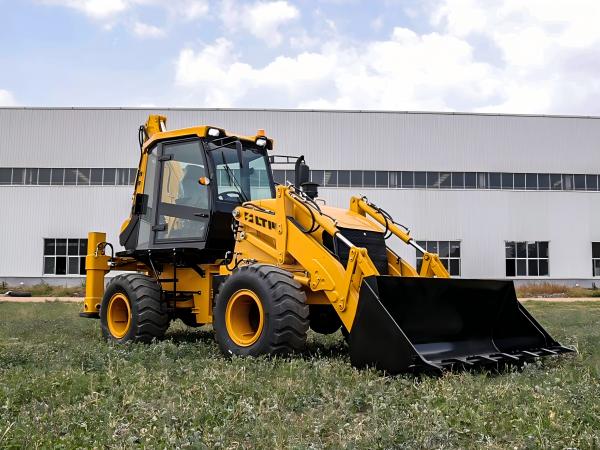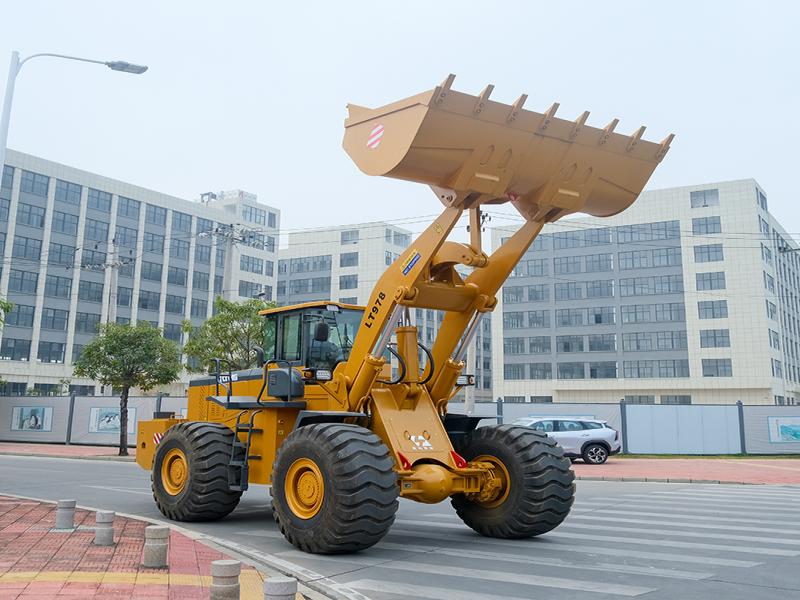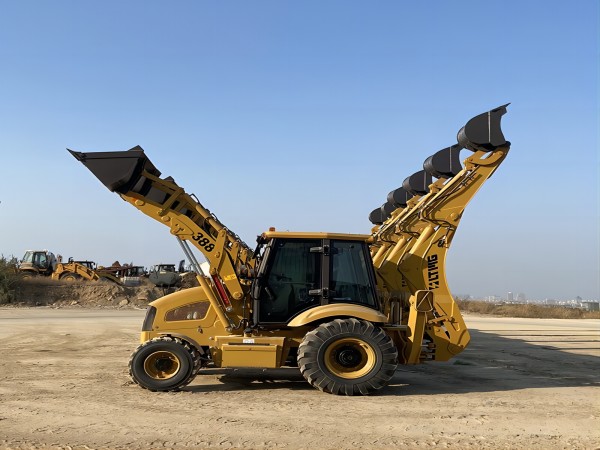Mantenha seu equipamento funcionando com eficiência: 5 problemas comuns em carregadeiras e como resolvê-los rapidamente
Jul 22, 2025
Carregadeiras de rodas são equipamentos essenciais em canteiros de obras, minas, fazendas e portos. Eles realizam trabalhos pesados de carregamento, movimentação e limpeza dia após dia. No entanto, como qualquer máquina que trabalha duro, os carregadores inevitavelmente encontrarão vários problemas. Identificar e resolver esses problemas a tempo não só minimizará o tempo de inatividade dispendioso, como também garantirá uma operação segura e prolongará a vida útil do equipamento. Este artigo analisará em profundidade os 5 problemas mais comuns em carregadeiras e fornecerá soluções claras e viáveis para ajudar você a manter seu equipamento com o melhor desempenho. Problema 1: Resposta lenta da transmissão ou deslizamento (problemas de transmissão)A transmissão é o núcleo do sistema de energia do carregador e sua saúde afeta diretamente a capacidade de deslocamento e operação do equipamento. Sintomas comuns:Os sintomas comuns incluem dificuldade para trocar de marcha, impacto forte, deslizamento da marcha ou interrupção de energia durante a condução, ruídos anormais de zumbido ou rangido na transmissão, além de alta temperatura do óleo da transmissão e alarmes no painel. Causas raiz:As causas raiz incluem problemas de óleo, como baixo nível de óleo da transmissão, contaminação do óleo ou uso do tipo errado de óleo; bloqueio do filtro, ou seja, o filtro da transmissão não foi trocado por um longo período, resultando em um circuito de óleo bloqueado; desgaste interno, como desgaste de componentes internos, como discos de embreagem, discos de fricção ou engrenagens; e falha do controle eletrônico, ou seja, falha da válvula de controle ou válvula solenoide, resultando na incapacidade de executar corretamente o comando de mudança. Solução:Verifique o óleo regularmente: Verifique o nível do óleo da transmissão diariamente e substitua o óleo da transmissão e o elemento filtrante rigorosamente de acordo com o ciclo recomendado pelo fabricante. Esta é a medida preventiva mais básica e importante.Use o óleo certo: certifique-se de sempre usar um óleo de transmissão específico que atenda às especificações do equipamento.Preste atenção à limpeza: Mantenha a transmissão e o radiador limpos para garantir um bom desempenho de dissipação de calor.Diagnóstico profissional: Se o problema persistir, principalmente envolvendo ruído interno ou deslizamento intenso, interrompa a operação imediatamente e entre em contato com um técnico profissional para inspeção, a fim de evitar a expansão da falha. Problema 2: Falhas no Sistema HidráulicoO sistema hidráulico é o "músculo" da carregadeira, responsável por todas as ações principais, como levantar a lança e virar a caçamba. Sintomas comuns:A velocidade de elevação da lança ou de giro da caçamba diminui significativamente. Mesmo com a rotação do motor alta, a força de elevação parece insuficiente. A bomba hidráulica emite um apito agudo. Há sinais evidentes de vazamento de óleo nas juntas ou cilindros do tubo de óleo hidráulico, e a temperatura do óleo hidráulico está muito alta. Causa raiz:A contaminação por óleo é a principal causa de falhas no sistema hidráulico. A entrada de poeira, umidade ou partículas metálicas no óleo desgasta rapidamente a bomba, a válvula e o cilindro; bloqueio do elemento filtrante, ou seja, o elemento filtrante do óleo hidráulico (incluindo os elementos filtrantes de sucção e retorno de óleo) fica bloqueado, resultando em suprimento insuficiente de óleo; nível de óleo muito baixo, ou seja, o nível de óleo no reservatório de óleo hidráulico está abaixo do padrão, fazendo com que o sistema inale ar. Componentes essenciais estão desgastados, como a bomba hidráulica, a válvula de controle principal ou as vedações internas do cilindro, resultando em vazamento interno e na incapacidade de gerar pressão. Solução:Mantenha o óleo limpo: Troque regularmente o óleo hidráulico e todos os elementos filtrantes. Ao adicionar ou substituir o óleo hidráulico, certifique-se de que o ambiente e as ferramentas ao redor estejam limpos.Inspeção diária: Verifique o nível do óleo hidráulico antes de iniciar o trabalho todos os dias, inspecione todos os tubos e juntas hidráulicas e resolva vazamentos a tempo.Evite sobrecarga: a operação de sobrecarga prolongada acelerará o desgaste das bombas hidráulicas e válvulas.Teste de pressão profissional: se houver alguma fraqueza no movimento, peça aos técnicos que usem um manômetro profissional para testar a pressão do sistema e localizar com precisão o ponto de falha. Problema 3: Dificuldade em dar partida no motor ou fumaça preta (Problemas no motor)O motor é o coração da carregadeira e qualquer problema com ele pode causar a parada completa do equipamento. Sintomas comuns:Os sintomas comuns incluem dificuldade de partida quando o motor está frio ou quente, necessidade de várias tentativas, potência insuficiente durante o funcionamento, sensação de "fraqueza", fumaça de cor anormal saindo do cano de escapamento (fumaça preta: combustão incompleta; fumaça azul: óleo queimando; fumaça branca: combustível contém água ou líquido de arrefecimento entra no cilindro) e a temperatura da água do motor está muito alta ou há um som de batida anormal durante o funcionamento. Causas raiz:As causas raiz incluem o sistema de combustível, como filtro de diesel entupido, má atomização do injetor ou combustível de baixa qualidade; no sistema de admissão, o filtro de ar está severamente entupido, resultando em entrada de ar insuficiente; no sistema de arrefecimento, o radiador está entupido, o termostato está com defeito ou o líquido de arrefecimento é insuficiente, resultando em superaquecimento do motor; também há problemas com o sistema de lubrificação, ou seja, baixa pressão de óleo ou óleo insuficiente. Soluções:Implemente rigorosamente a manutenção: De acordo com o manual de manutenção, substitua os "três filtros" (filtro do motor, filtro de diesel, filtro de ar) e o óleo do motor no prazo.Garanta a qualidade do combustível: adicione diesel limpo e qualificado de canais regulares.Mantenha o radiador limpo: use regularmente ar comprimido para remover poeira e detritos da superfície do radiador.Preste atenção ao painel: sempre preste atenção aos indicadores-chave, como o medidor de temperatura da água e o medidor de pressão do óleo, e pare a máquina imediatamente para inspeção se encontrar qualquer anormalidade. Para problemas como fumaça preta, geralmente comece verificando o filtro de ar e o filtro de diesel. Problema 4: Desgaste excessivo ou danos nos pneus (Problemas com pneus/rodas)O pneu é a única parte da carregadeira que entra em contato com o solo, e seu estado afeta diretamente a tração, a estabilidade e até mesmo a segurança operacional do equipamento. Sintomas comuns:Desgaste irregular do padrão da banda de rodagem, como desgaste excessivo no meio, nas laterais ou em partes, rachaduras e saliências na lateral do pneu ou perfuração da banda de rodagem por objetos pontiagudos, solavancos anormais ou trepidação da carroceria durante a condução, queda frequente na pressão dos pneus, necessidade frequente de reposição de ar, parafusos do cubo da roda soltos ou deformação e rachaduras no aro. Causas raiz:Pressão inadequada dos pneus. Pressão excessiva dos pneus causará desgaste acentuado na parte central da banda de rodagem. Pressão insuficiente causará desgaste em ambos os lados e aumentará o risco de estouro do pneu. Sobrecarga prolongada, ou seja, operação contínua acima da carga nominal, causará enorme pressão na estrutura do pneu. Condições de trabalho severas, como dirigir frequentemente sobre pedras pontiagudas, resíduos de construção ou terrenos acidentados. Maus hábitos de operação, como curvas fechadas, virar no local e correr em alta velocidade para a pilha de materiais, desgastarão seriamente os pneus. Há também negligência na manutenção, ou seja, a falha na limpeza das pedras incrustadas no padrão a tempo e o aperto incorreto dos parafusos do cubo da roda de acordo com o torque especificado. Solução:Verificação diária da pressão dos pneus: Quando o pneu estiver frio, use um manômetro para verificar e ajustar a pressão de acordo com o valor padrão recomendado pelo fabricante antes de iniciar o trabalho todos os dias. Intensifique a inspeção visual: circule o veículo para verificar se há cortes e saliências visíveis na superfície do pneu e remova pedras ou outros objetos estranhos incrustados na banda de rodagem a tempo.Operação de direção padrão: evite sobrecarga, reduza a direção em alta velocidade e curvas fechadas e aproxime-se suavemente ao remover materiais.Aperto e inspeção regulares: Use uma chave de torque para verificar e apertar todos os parafusos do cubo da roda regularmente. Verifique também se o aro está deformado ou rachado.Escolha o pneu certo: escolha pneus com padrões e graus de resistência ao desgaste correspondentes de acordo com as principais condições de trabalho (como terraplenagem, pátio de pedras, pátio de carvão, etc.). Problema 5: Falha no sistema elétrico (problemas elétricos)Os carregadores modernos dependem cada vez mais de sistemas elétricos complexos para controlar e monitorar o status do equipamento. Sintomas comuns:Os faróis e as luzes de trabalho estão apagados ou piscando, o motor de partida não responde ou não consegue girar, a bateria descarrega com frequência e as luzes indicadoras do painel, os instrumentos ou as telas de exibição não funcionam corretamente. Causas raiz:Problemas de bateria, como envelhecimento da bateria, corrosão da cabeça da pilha ou conexões frouxas; falha do gerador, ou seja, o gerador não consegue carregar a bateria normalmente; danos na linha, como envelhecimento, quebra, curto-circuito ou mau contato dos conectores; e fusível queimado, ou seja, uma sobrecarga do circuito ou curto-circuito faz com que o fusível queime. Solução:Manutenção da bateria: Mantenha os terminais da bateria limpos e firmes e aplique manteiga para evitar corrosão. Verifique o nível do eletrólito regularmente (se aplicável).Verifique o gerador: Verifique a tensão da correia do gerador regularmente. Se a bateria estiver frequentemente fraca, verifique a tensão de carga do gerador.Proteja a fiação: Proteja o chicote elétrico de todo o veículo para evitar que ele seja espremido, esfregado ou exposto a óleo e altas temperaturas.Verifique o fusível: se um dispositivo elétrico não funcionar, verifique primeiro a caixa de fusíveis correspondente. Conclusão: A prevenção é melhor do que a curaGerenciar uma carregadeira de rodas exige o estabelecimento de um plano rigoroso de inspeção diária e manutenção regular, para que você possa descobrir e resolver a maioria dos problemas acima com antecedência. Lidar com pequenos problemas rapidamente é a melhor maneira de evitar que eles se transformem em revisões caras e longos períodos de inatividade. Incorpore a manutenção preventiva ao seu trabalho diário e sua carregadeira retornará seu investimento com maior eficiência, vida útil mais longa e desempenho mais seguro.

